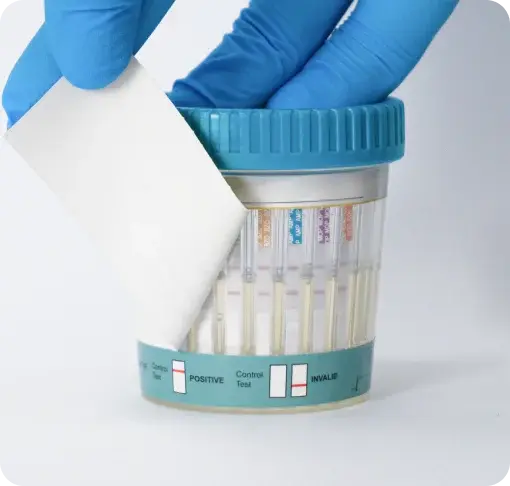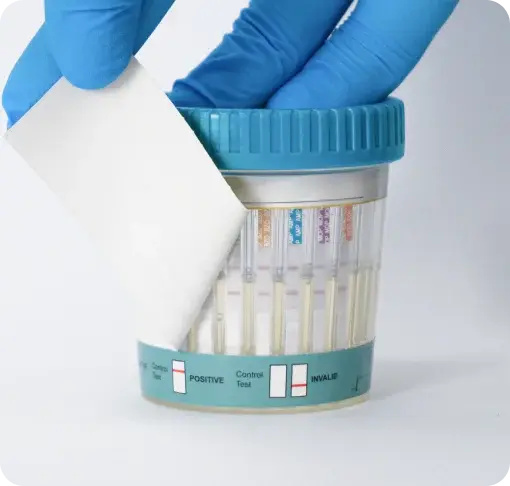How Do I Test Employees for Cannabis at Work?
Cannabis, also known by names like weed, pot, grass, or skunk, is one of the most widely used—and tested—drugs in the UK. While some forms of medical cannabis are legally prescribed, most cannabis use remains illegal, especially in workplace and safety-sensitive environments.
If you're facing a workplace drug test, clinical screening, or a point-of-care test (POCT), you might be wondering: Will cannabis show up on a drug test? The short answer is yes—and often, the test is specifically designed to detect its psychoactive compound, THC, or its metabolites.
What Does Cannabis Show Up As on a Drug Test?
On most drug screening reports, cannabis is detected through its primary metabolite: THC-COOH. Depending on the testing provider or lab, this may appear as “THC metabolite,” “cannabinoids,” or “cannabis.” If you see any of these terms on a drug test result, it typically means the test detected cannabis use.
Which Drug Tests Detect Cannabis?
Cannabis is detectable in several types of drug tests commonly used in workplaces and healthcare environments.
Urine Drug Test
Cannabis differs from many other drugs because its active compound, THC, is stored in the body’s fat cells. This storage mechanism causes the detection window to vary significantly between occasional and chronic users. While occasional users may test positive for only a few days, chronic or heavy users can test positive for several weeks, as THC accumulates in fat tissues and is gradually released over time.
This makes accurate and reliable cannabis testing essential—especially in workplace or clinical settings where understanding usage patterns is critical.
Detection Window by User Type (Urine Test)
| Type of User | Detection Window |
| Occasional users | 1- 3 days |
| Moderate user | Up to 7 days |
| Frequent users | Up to 15 days |
| Chronic users | 3+ weeks |
Panel inclusion:
-
Included in most 5, 6, 9, 12, 14, and 16-panel drug tests
Cut-off threshold:
-
Often 50 ng/mL (screening), confirmed at 15 ng/mL
Saliva Test
Unlike urine tests, saliva tests do not rely on the body’s fat storage to detect THC. Instead, they measure the presence of THC in oral fluids, which reflects recent use rather than long-term accumulation.
THC is fat-soluble, meaning that after cannabis use, it gets absorbed and stored in the body’s fat cells, where it can be slowly released into the bloodstream over time. This is why urine tests can detect cannabis use days or even weeks after the last use, especially in chronic users.
In contrast, saliva tests detect active THC that remains in the mouth shortly after consumption. Because THC does not linger in saliva the way it does in fat tissues, the detection window is much shorter, typically 24 to 72 hours depending on frequency of use and individual metabolism.
Detection window:
-
1- 2 days
Use case:
-
Widely used in POCT, workplace, and roadside testing
Workplace Drug Testing: Should You Test Employees for Cannabis?
Yes. Employers—especially in regulated sectors like healthcare, logistics, construction, and manufacturing—routinely test for cannabis. THC can impair cognitive and motor skills, posing safety and productivity risks. Because its metabolites linger in the body even after the effects have worn off, drug tests can reliably detect recent cannabis use.
Frequent users tend to retain THC-COOH for longer due to accumulation in fat cells.
Can You Get a False Positive for Cannabis?
Can You Get a False Positive for Cannabis? False positives are uncommon but can happen—especially with saliva tests, which have an estimated 10% false-positive rate. Medications such as ibuprofen, naproxen, and proton pump inhibitors have occasionally been linked to cross-reactivity.
Confirmatory lab testing using gas chromatography-mass spectrometry (GC-MS) or liquid chromatography-mass spectrometry (LC-MS) can distinguish true positives from false ones with high accuracy.
Is Cannabis Part of a 5, 9, 12, 14, or 16 Panel Drug Test?
Yes. Cannabis (typically tested via THC-COOH) is one of the most common substances screened for in:
- 5-panel drug tests
- 9-panel drug tests
- 12, 14, and 16-panel drug tests
These tests are widely used across workplaces, hospitals, rehabilitation centres, and by occupational health providers. Urine testing is the most common method for routine workplace drug screening.
Cannabis Detection in Oral Fluid (Saliva) Tests
Saliva tests detect active THC, not just the metabolites. Because THC doesn’t store in fat like in urine detection, the detection window is much shorter, making it useful for identifying recent use or potential impairment. Saliva testing is widely used in POCT (Point of Care Testing), roadside checks, and workplaces where detecting recent use is crucial.
Final Thoughts
Cannabis use—whether recreational or unauthorised medical use—will show up on drug tests. Its psychoactive effects may wear off quickly, but the metabolites can linger in the body for days or even weeks. If you're subject to workplace, clinical, or legal testing, understanding what tests detect cannabis and how long it stays in your system is essential.
At AttoSure, we provide compliant, confidential, and fast cannabis testing services tailored to healthcare and workplace environments.
Contact us today to discuss your testing requirements or learn more about cannabis detection.
Contact Us



